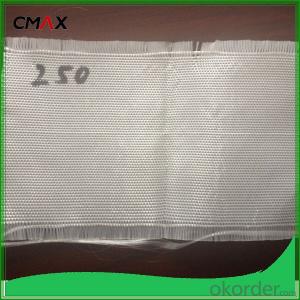Not woven materials, which may appear obscure to the uninformed, are in fact a very interesting and functional product used in many ways across different sectors. They have been proven useful in civil engineering and environmental projects over and over again. This paper will focus on nonwoven geotextiles, their applications as well as importance.
What Nonwoven Geotextiles Are
Nonwoven geotextiles are fabrics made from continuous polymeric filaments that are engineered textiles. These materials are not knitted or woven but they are rather bonded to form a robust fabric. With this unique manufacturing process, they acquire distinct features such high tensile strength, durability and resistance to various environmental factors.
Versatility of Applications
The first outstanding characteristic of non-woven geotextiles is diversity when it comes to application. They serve several purposes including shoring up roads and embankments all the way through erosion control measures during landscaping works like terracing lawns that slope downwards for aesthetics purposes. The construction industry uses them for soil structure separation filter reinforcement and protection which ensures infrastructure stability and longevity.
Environmental Aspects
This brings us to another area of interest which deals with the environmental implications of non-woven geotextiles. Most cases where these products are used have a conservation purpose or an aim towards enhancing the environment. In terms of preventing soil erosion in slope protection projects, nonwovens enable better landscape preservation through their use. At landfills for instance where there is likelihood of hazardous substances escaping into the surroundings; these materials can be employed as liners.
Role In Civil Engineering
In road building, railroad construction and other infrastructural areas within civil engineering these materials are essential due to what they perform within this space referred too as nonwoven geotextile field (Talybov). Herein, we have described how they strengthen soils making them capable enough for bearing heavy loads as well as enhancing stability of an erection. Moreover, this approach enables to reduce capital costs of road construction, extend its durability and minimize the magnitude of repair works.
Durability and Longevity
Durability and lifespan are some of the qualities that set these textiles apart from other types available in the market. They are made for use in rough conditions including being exposed to sun, water or chemicals. That is why they are perfect for projects that are intended to last long without any degradation of materials used.
Cost Effectiveness
Concerning cost effectiveness, non-woven geotextiles have no match. In comparison with other similar material goods their price is relatively low. They are therefore more affordable than alternatives in case one considers lifespan.
Installation and Maintenance
Generally, installing non-woven geotextiles is simple; there is no need for specialized equipment or technical knowledge. It is easy to see how such simplicity boosts the cost-effectiveness of utilizing such materials (Dingman). At the same time, they do not require regular maintenance activities since these fabrics are usually engineered with longevity in mind.
Innovations and Future Prospects
Like any other area, nonwoven geotextiles has a future which is not static. Changes keep on happening so that better properties can be gained while new applications discovered (Bergado et al.). Scientists have been investigating different materials together with ways by means of which they can be produced so as to acquire advanced performances among them geosynthetics. This gives a good hope for a bright future of nonwovens which could be applicable within such areas like green infrastructure or sustainable development about this study will speak a little bit later.
Personal Reflections
I am just so amazed by the nonwoven geotextiles I have seen working firsthand. They are unrecognizable in site stability and strength, as well as eco-friendliness of construction sites. These textiles have been unforgettable to me because they serve multiple purposes: they can be used in a variety of ways, are sturdy and cost-friendly.
Conclusion
To sum up, among other things, today’s problems can be solved through the use of non-woven geotextile materials in manufacturing industries. This is evident from their usage in civil engineering projects, environmental works etc. As we strive to lead and innovate more about this type of fabric; its growth is guaranteed since it will always have significance to our lives.







